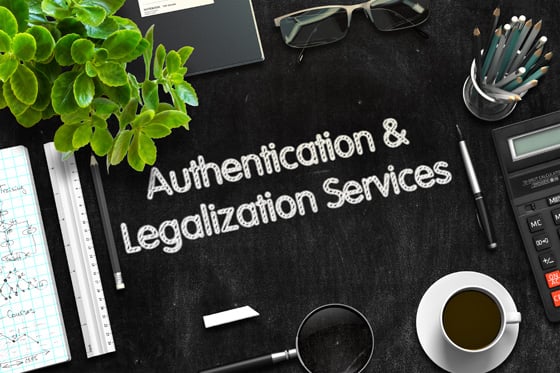The International Trade Blog Export Forms
Certificate of Origin Requirements for Exports
On: August 27, 2018 | By:  Catherine J. Petersen |
2 min. read
Catherine J. Petersen |
2 min. read
 Dear Cathy,
Dear Cathy,
We took a few export training sessions with you some time ago. Since our sessions with you, our staff in customer service raised a question about certificates of origin. I was wondering if you could help us.
Most of our goods come from Asia, and we do not further manufacture or assemble any of the goods. Upon receipt at our distribution center, we complete an inspection, audit our import documentation, and notify our customs broker when there are any overages, under-reporting, or damaged goods received. The customs broker sends us the corrected paper work.
We have customers in Latin America; our imported goods are shipped to Latin America. Our customers in Latin America ask us to provide them with a certificate of origin (COO) regarding the goods we are selling. Depending on where the customer is located, they might ask for a USMCA Certification of Origin or CAFTA-DR Certificate of Origin.
The question is: Are we obligated to provide the customer with a certificate of origin covering the goods we're selling?
Thank you,
Perplexed on Origination
Dear Perplexed,
You are not obligated to provide a USMCA or CAFTA COO. These two types of COOs are voluntarily issued when the goods originate according to the rules of these two free trade agreements.
However, Latin American countries' customs authorities (as well as many other countries) often require a country of origin designation within the documentation that you prepare and submit to your customer so they may clear goods into their country.
There are different approaches that will satisfy this requirement. It is best to confirm the best option for your customer and verify which of these options will ensure smooth customs clearance.
Here are three options:
- Identify the country of origin with a statement on each line item on the commercial invoice,
- Issue a generic certificate of origin (something you can easily do online) that identifies the product item (SKU) number for each product, then sign the document and submit it for chamber of commerce signature (certification), or
- Issue a supplemental letter to the buyer with the country of origin for each item being shipped.
In addition to the documentation identifying the country of origin, it is important to mark the product and the boxes with the correct country of origin.
Sincerely,
Cathy
Like what you read? Join thousands of exporters and importers who subscribe to Passages: The International Trade Blog. You'll get the latest news and tips for exporters and importers delivered right to your inbox.

About the Author: Catherine J. Petersen
In 1992, Catherine Petersen founded C J Petersen & Associates, LLC, a research, instruction and consulting firm located in St. Paul, Minnesota, USA. She has designed documentation and procedure manuals for exporters and has authored/co-authored five books.
Ms. Petersen has had day-to-day practical experience at a freight forwarder, a trading company, and an ocean carrier; she has been active in international business since 1980. Her background led her to develop C J Petersen & Associates, LLC, which is a collaborative consultancy that works with clients to identify compliance gaps and to resolve them. Ms. Petersen retired in 2022.

